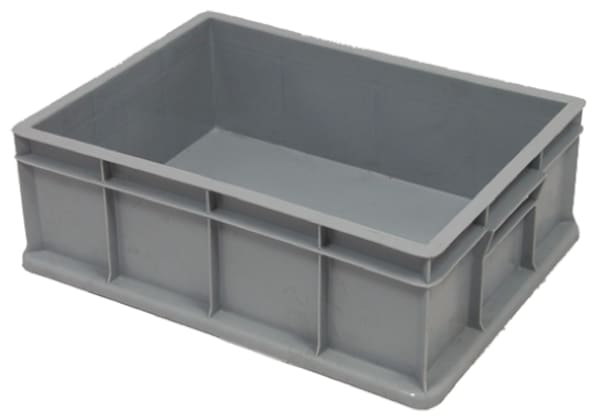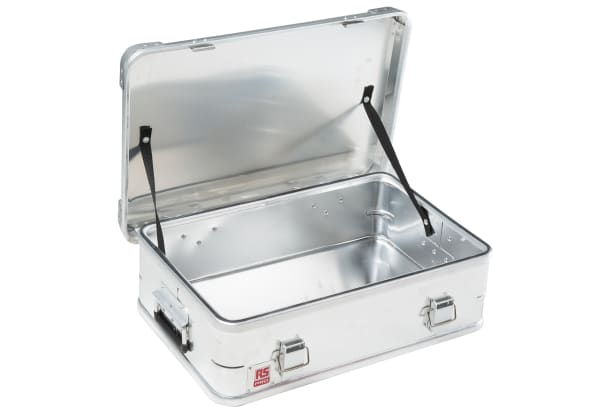- Published 4 Dec 2023
- Last Modified 4 Dec 2023
- 6 min
What is Inventory Management?
Spare parts inventory is tied-up capital. Sold inventory is revenue. But hold-ups in getting parts to jobs delay revenue and reduce customer satisfaction, and warehouses mean ongoing costs. Strike the right balance with an inventory management system and store just the right quantities of spare parts in the right amount of storage space.

Managing inventory involves tracking its purchase (your investment), storage (tied-up capital), and sale (return on investment). Inventory management techniques include prioritising part stock levels, balancing inventory volume, and analysing parts sales performance. They also require careful team training.
Why is inventory management important? It reduces inventory errors, which can delay completing jobs. It lets you purchase only the parts you need based on the revenue they’re expected to generate.
Spare Parts Inventory Management
Inventory Management Systems
Inventory management systems let you reliably know the spare parts you have and where they are, assess their sales performance, and determine their purchase frequency.
Every part should have a set maximum stock, minimum stock, and a ‘trigger’ quantity for purchasing stock (based on previous delivery times). This parts management ensures you always have the spare parts inventory to fulfil your jobs.
Cycle counts are essential inventory management techniques. They are frequent quantity-checks of just a few parts at a time. Inventory management systems should determine each part’s cycle count frequency based on sales revenue and frequency.
The system should assess and analyse sales performance. You need to know if the capital you’re holding on shelves reliably generates revenue.
CMMS Systems
A computerised maintenance management system (CMMS) tracks company equipment maintenance and its required spare parts inventory. A CMMS can log your equipment operation, as well as synchronise with your equipment condition monitoring system, and plan its maintenance downtime. This lets you avoid the unplanned downtime of breakdowns.
Using maintenance planning along with inventory management you can synchronise and store the spare parts equipment needs for its planned maintenance. All this maximises asset uptime and minimises maintenance costs.
A CMMS also lets you register staff members certified to operate this equipment and log who performed what work for which jobs. It collects data on how often assets operate and how long they sit idle, letting you assess how your equipment investments are paying off.
Spare Parts Best Practices
Labelling Critical Components
Your spare parts management system must involve a clear, unambiguous labelling system. This can include a grading system for judging stock levels. Two common methods are the ABC and XYZ systems.
The ABC system grades parts by financial value. ‘A’ parts cost the most while ‘C’ parts cost the least. This system also assumes that of all the different parts you stock, ‘A’ parts will generate the most revenue. This means your shelf space will hold mostly low-cost ‘C’ parts with just a few expensive, but crucial, ‘A’ parts. ‘A’ parts need more frequent cycle counts, though.
The XYZ system is similar, but grades based on demand. ‘X’ parts are sold the most, etc. With this setup, you’ll have many ‘Z’ parts at low stocks since they sell infrequently, and larger stocks of just a few ‘X’ parts that get continually replenished due to sales.
An ideal inventory management system will use both of these to optimise stocks of spare parts based on how much revenue they’re expected to generate and how often.
Maintaining Balanced Inventory
The ABC and XYZ systems are both methods of balancing spare parts inventory: finding the ideal spare parts quantities to meet reasonably expected demand without tying up excessive capital in unsold inventory. Use ABC and XYZ to determine stock levels, and continuously assess if spare parts have the right designations based on their actual sales.
If you determine parts generate negligible revenue and rarely sell, then be open to removing them from your inventory entirely. Your storage space is too valuable to waste on dead stock. If spare parts sales fluctuate seasonally, then have methods for adjusting stocks and exchanging shelf space accordingly.
Use these same inventory management techniques on a macro level to ensure each of your sites only carries what it needs—and establish protocols for exchanging products between sites if necessary.
Inventory Management Training
An inventory management system is a team effort. It can only work if you train all staff involved to understand its importance and commit to making it succeed continuously. Explain what their roles are in these systems and how inventory errors make the company suffer.
Make sure anyone who adjusts inventory maxes and mins and when to place orders understands the strategy and concepts underlying it. They need to be able to analyse data trends to do parts management effectively.
Prepare clear, measurable business goals for these systems so staff understand the objectives. Make your inventory management system part of the company culture so everyone commits to the business’s success.
Inventory Management Tips
All these inventory management techniques can be best implemented with these guidelines:
- Invest in inventory management software, including digital inventory management.
- Maximise automation, minimise human inputs (sources of error).
- Set spare parts stocks using ABC and XYZ grading systems.
- Do regular cycle counts and optimise their frequency for each part.
- Track essential info for spare parts: internal and external part numbers, supplier, country of origin, serial number (if applicable). Barcode labels and strict systems for scanning them help collect this info quickly and error-free.
- Continually reassess your stock levels using data for sales frequency, vendor performance, etc.
- Train staff effectively in the importance of inventory management tools and how they work best. Make sure the team is committed.
If you’ve browsed a hardware store online and seen which locations have inventory of certain products, real-time digital inventory management is behind the scenes. If you’ve ordered something online and received it in just a couple days, a sophisticated inventory management system made this happen, likely digitally tracking the item on every step of its journey.
Digital inventory management collects data to optimise your spare parts management. With it, you can log all incoming products easily and clearly on a tablet, cutting out handwritten checks and their frequent human errors. Using scannable barcode labels, or even RFID tags, you can track all movements of your spare parts.
- Avoid stockouts (supposedly stocked parts not being there, which can hurt customer relations).
- Reduce overstocks (carrying more inventory than you realise, meaning more tied-up capital).
Digital inventory management also collects data to help you succeed:
- Predict demand and adjust your inventories (and sunk capital) accordingly.
- Understand your supply chain by learning material paths and their bottlenecks so you can address those issues.
Digital inventory management services can connect with small e-commerce businesses by storing the business’s products at fulfilment centres and then sending shipments to customers, tracking the items digitally throughout the process.
The Future of Inventory Management
The tools in inventory management are becoming increasingly automated so as to cut out human error.
- RFID tags are seeing greater use for transmitting and logging part data instantly and more easily than with barcodes.
- Artificial intelligence and machine learning are playing greater roles in the data analytics behind effective spare parts management.
- Businesses are moving away from single inventory sites and towards multiple fulfilment centres, tracking parts every step of the way.
Browse RS inventory solutions to take your inventory management to the next level.


